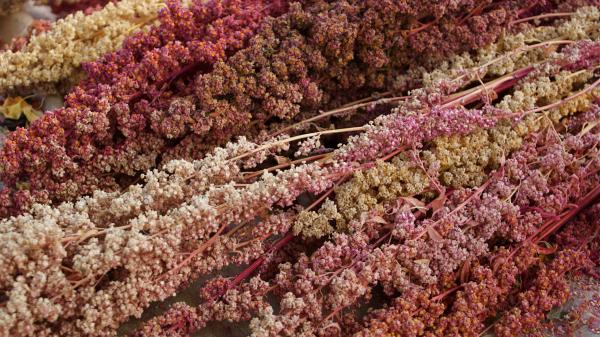2013: UN International Year of Quinoa
The International Year of Quinoa aimed to raise awareness of how the grain crop quinoa can provide nutrition, increase food security, and help eradicate poverty around the world.

Quinoa harvest in the Peruvian Andes.
©iStockphoto.com/ErnestoG
The Year of Quinoa aimed to focus world attention on the “nutritional, economic, environmental and cultural value of quinoa,” a seed originally cultivated for food in the Andes, primarily in Peru, Bolivia, and Ecuador.
The year 2013 was also the International Year of Water Cooperation.
Gluten free plant food
Quinoa is the only plant food that is gluten free, has a high protein content, and contains all essential amino acids. Additionally, it can easily adapt to different ecologies, making it easy to grow in all forms of weather and land conditions.
Its nutritional value and its adaptability makes quinoa an excellent food source in places where ecological conditions do not allow other food crops to thrive, as well as in regions where animal protein do not prominently feature in daily diets.
Preventing hunger
With the Food and Agriculture Organization at its helm, the key purpose of the year was to emphasize on how quinoa can be used as a way to prevent hunger and alleviate populations from poverty.
The IYQ also hoped to develop a better understanding of Quinoa markets in order to connect existing and future producers with the marketplace, and to facilitate exchange of scientific knowledge regarding the seed.
Celebrations
Activities to observe the year included a global forum on Quinoa to be held in Ecuador, competitions for innovative uses of quinoa, a multi-language quinoa cookbook, and initiating a global day of quinoa.